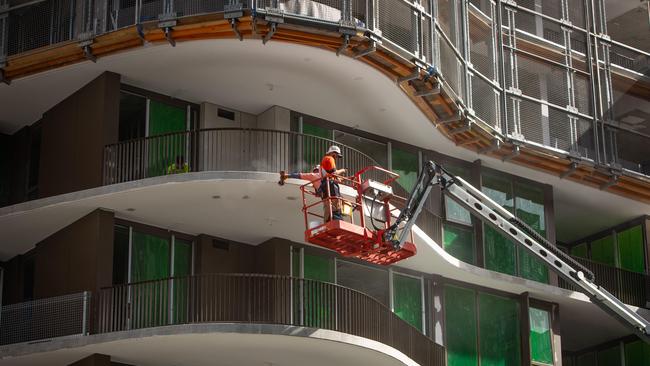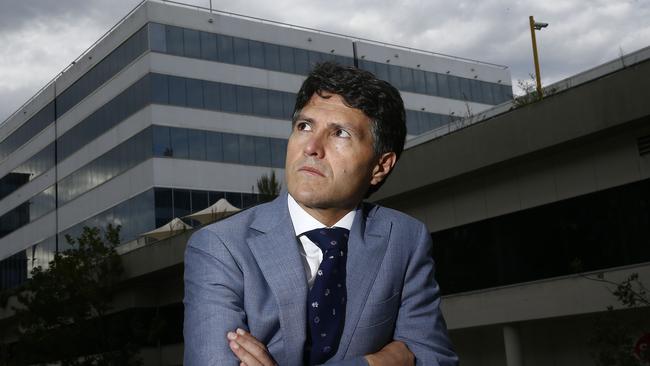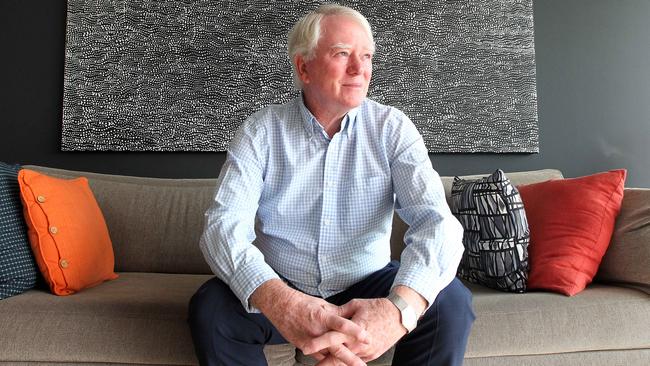Ryde housing supply forecast: 10,000 new homes by 2023
The development drive in a suburb in Sydney’s northwest will be taken up a notch over the next five years with an estimated 10,000 new homes to be built in one already congested area.
New housing forecasts show development pressures in Ryde will hit even harder over the next five years.
The NSW Planning Department’s latest housing supply estimates reveal Ryde will have an extra 10,000 new dwellings by 2023 to squeeze in thousands of new residents.
It represents a 46 per cent increase in the State Government’s housing demands for Ryde, following the previous five-year forecast to 2021 of 7600 new dwellings.

And it flies in the face of a pre-election promise by Ryde State Liberal MP Victor Dominello, a senior minister in the Berejiklian Government, to put the brakes put on development in his electorate.
“I am demanding a slashing of Ryde’s housing targets to reflect the targets set for Hunters Hill and Lane Cove,” the new Customer Service Minister posted on his Facebook page on October 31 last year.
The new housing figures, released a day before the Federal Election, show Ryde’s forecast is significant higher than those of Lane Cove and Hunters Hill, which are 2700 and 150 respectively.
Mr Dominello’s opposition to development in Ryde led to what’s been described as “The Dominello Effect”, where other politicians have followed his lead in calling for a building slowdown across Sydney.
And it’s also seen Australia’s richest property developer, Harry Triguboff, sue the State Government over delays to his high-rise building proposal at 112 Talavera Road, Macquarie Park.

Mr Dominello today said he was “working closely” with the planning department to “get a breakdown of the figures” and “understand how much of it is existing projects”.
“Development is necessary,” he said, “but it must be matched with necessary infrastructure.
“The two-year development freeze remains intact while the Greater Sydney Commission finalises its assurance review of planning in Ryde. I await the review’s findings and will continue to fight against inappropriate development.
“No planning proposals will be approved until the GSC has completed its review.”
Ryde Labor Mayor Jerome Laxale accused Mr Dominello of misleading the community on his anti-development drive before the State Election.

“He told the electorate one thing and his government has done the complete opposite. That is unacceptable,” Cr Laxale, who was beaten by Mr Dominello at the election on March 23, said.
“He has been running an anti-development line for 18 months and yet his government has now set even tougher targets.
“No one was expecting this from the government. Mr Dominello is a senior member of this government and he was re-elected on a platform of restricting development in Ryde.”
The commission is expected to release its final report into the assurance review in the next month.
A preliminary report revealed an alarming disconnect between Ryde’s planning and infrastructure delivery.
When it was released in early March, Labor’s Planning spokeswoman Tania Mihailuk said the commission’s action was a smokescreen because it “basically investigated its own housing targets”.
Developers say the latest forecasts do not factor in the current downturn in housing supply.

“There has been a slowdown in the market, especially with presales, and some developers are putting off staff and going into mothballs for a while,” Urban Taskforce chief executive officer Chris Johnson said.
“It’ll probably take another couple of years for it to bounce back and for confidence to return to the market.”
Planning Department executive director Justin Douglas said councils, along with the development industry, service providers and state agencies, had “significant input” into putting the housing supply data together.
“The forecast helps to inform decisions on future land-use zoning to ensure there’s a solid pipeline of new housing supply,” Mr Douglas said.
“It takes account of current residential developments under assessment, approved but not commenced construction and those under construction, as well as analysis of likely future development under current zoning and planning controls.”
Parramatta will be expected to shoulder much of the growth for Sydney over the next five years. It will have an estimated 22,100 new dwellings by 2023, the highest of any local government area in the Harbour City.
Blacktown is next with 18,300, ahead of Sydney (14,850), Liverpool (11,950) and The Hills (11,700).



